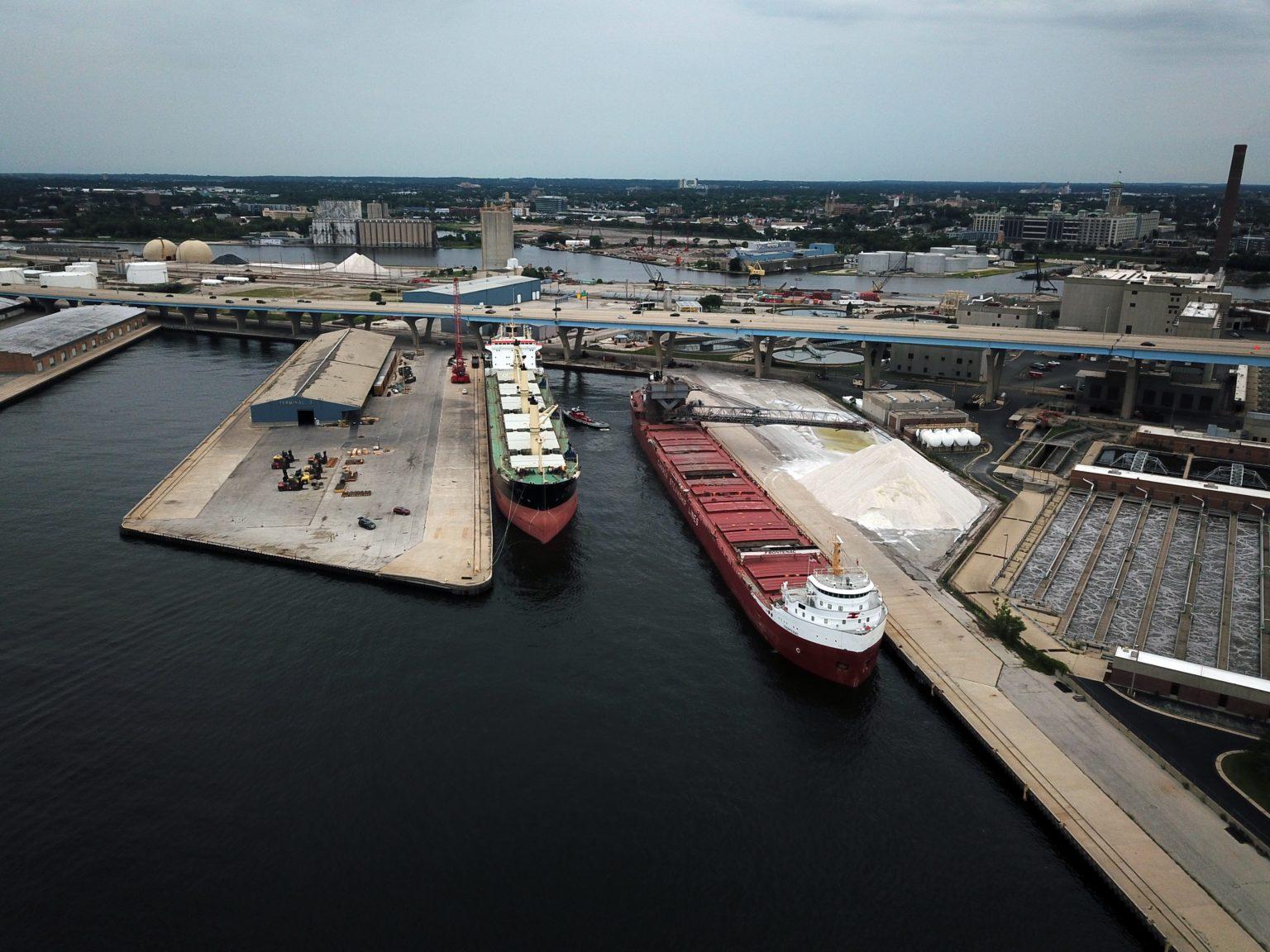
Despite the pandemic, Port Milwaukee finished 2020 with its highest cargo volumes in seven years. Director Adam Tindall-Schlicht describes how the port is driving growth through reinvention and diversification.
In an unusual year with historic challenges, Port Milwaukee finished 2020 with its highest annual cargo volume in the past seven years. The results, says Port Director Adam Tindall-Schlicht, were the culmination of the port’s recent mission to be a key catalyst in domestic and international trade through rediscovery, reinvention and diversification.
“In terms of rediscovery, one of our areas of emphasis has been reintroducing ourselves to the Great Lakes maritime industry, to local businesses, manufacturers, growers and producers, as a vital supply chain for their use, for their ready access to both domestic and world markets,” he explains.
Despite pandemic conditions, Port Milwaukee’s overall tonnage increased by 5.4% in 2020 compared with the previous year, led by agricultural exports and cement handling. The 2.81 million tons of cargo handled in 2020, also included construction material, salt, limestone, steel and other general cargo.

Adjusting to decline of coal cargo
Regarding reinvention, Port Milwaukee already is looking generations ahead. “By sheer necessity, changes in market dynamics have forced us to consider a new future at the port,” Tindall- Schlicht says. “For many, many years, Port Milwaukee handled via ship 750,000 tons per year of coal. That industry has gone away, and it has taken several years to really consider and strategically plan for some of the port’s big new uses to support industry locally and globally.”
Cruise shipping is among those uses. In December, the port entered into an agreement with Pearl Seas Cruises to give the company priority docking rights for its ships at the downtown Pier Wisconsin. The agreement helps solidify Milwaukee’s position as an embarkation and debarkation port for the company’s itineraries. Under the lease, Pearl Seas can extend the initial 10-year agreement until 2040. In January 2020, Viking Cruises chose Milwaukee as its turnaround homeport for some 20 voyages in 2022.
“Cruise ships on the Great Lakes has been an exciting opportunity that many of us in the Great Lakes world have been working to realize fruitfully over years and we’re finally, notwithstanding the pandemic, realizing that opportunity,” Tindall-Schlicht says.
New infrastructure to spur agricultural exports
Diversification includes the identification of new opportunities and new cargoes. The port, in coordination with The DeLong Co., is establishing a $31-million agricultural product maritime export facility. It will handle dried distillers grain and other agricultural commodities. “This is clear evidence of our ability to respond to market demand and build a future port here in Milwaukee that is flexible, that is dynamic and is really able to respond in a growing capacity for market demand and the products that sustain both local and international economies,” Tindall- Schlicht says. The DeLong facility will be online as early as 2022.
In November, Port Milwaukee and infrastructure contractor Michels Corporation signed an up to 99-year lease agreement as the company expands its marine construction operation at the port. “Further diversification attempts really will be much more fully realized in the years ahead, post pandemic,” Tindall-Schlicht says. Looking ahead, a long-term coastal resiliency and capital asset approach will be essential to the port’s continued success.

Meeting climate change challenges
The port director says the impacts of climate change are undeniable.
“Water fluctuations on the Great Lakes are nothing new,” he explains. “What we’ve seen over the last decade, where we went from historic lows to exceeding high, high levels of water, means that Port Milwaukee and other Great Lakes ports need to be prepared for climate-related and Great Lakes weather-related impacts to our operation.”
The port suffered some $2 million in damage to its international docks and terminals during a devastating storm on January 11, 2020. “Port Milwaukee had an exceptional safety and response plan which allowed us to react readily to that catastrophic event,” Tindall-Schlicht recalls. “We have been able to maintain and grow our international season in 2020 despite that damage because we had a ready response for the crisis, and because we have really spectacular partners. It was a can-do attitude that allowed us to open and maintain our international season so successfully in 2020.”
The capital asset renewal program is a “best practice model” that the port is implementing. “Most of the infrastructure that we use, and I would submit multiple other Great Lakes ports use, really was developed and brought into frequent use with the opening of the St. Lawrence Seaway System. So, you have infrastructure that’s 50, 60 years old,” Tindall- Schlicht says.
An essential multimodal hub in North America
“(We) will really comprehensively inventory those assets, look at their future use, look at the cost related with their perpetual maintenance and, ultimately, with those tools, pursue in the future a robust funding approach to fully modernize the port and bring it forward for generations of use.
“We are seeking to position ourselves as the foremost port on the Great Lakes and certainly an essential multimodal and marine transportation hub in the heartland of North America,” Tindall-Schlicht continues.
“Our aspirational goal is that over the next 10 to 15 years we will be able to bring a preponderance if not all of our capital assets to modern specification. It’s a big goal, but the Board of Harbor Commissioners here and the entire staff of Port Milwaukee are not shy in pursuing big goals, aspirational work and visionary projects.”